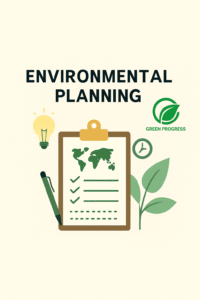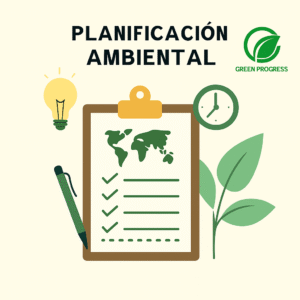What is Environmental Impact?
Environmental impact refers to the effects that human activities and natural processes exert on the environment, whether positive or negative. These impacts can alter ecosystems, air quality, water resources, biodiversity, and even climate systems. Understanding them is essential to develop strategies for mitigation, adaptation, and sustainable development.
Types of Environmental Impacts
Impacts are usually classified according to their nature, intensity, scale, timing, duration, recovery capacity, causality, and periodicity:
- By nature:
- Positive
- Negative
- By intensity:
- Low or minimal impact
- Medium impact
- High impact
- Threshold impact (maximum permissible)
- By extension:
- Local or punctual impact
- Partial impact
- Extensive impact
- Total impact
- By timing:
- Latent impact (short, medium, or long-term)
- Immediate impact
- Critical-moment impact
- By duration or persistence:
- Temporary impact
- Permanent impact
- By recovery capacity:
- Reversible impact
- Irreversible impact
- Recoverable or irrecuperable
- By causality and effect:
- Direct impact
- Indirect impact
- By periodicity:
- Continuous impact
- Discontinuous impact
This taxonomy allows environmental scientists and policymakers to prioritize mitigation actions and compare different activities ranging from factory farming to fast fashion on a common scale.
Key Categories Beyond Carbon
When most people hear «environmental impact,» they immediately think of carbon emissions. While greenhouse gases are critical, other categories are equally significant:
- Climate change and GHG emissions
- Water use and scarcity
- Land degradation and deforestation
- Biodiversity loss
- Air pollution (VOCs, smog, particulates)
- Waste generation and toxic releases
Main Causes of Environmental Impacts
The primary drivers of environmental impact include:
- Industrial activities (energy production, factory farming, textile manufacturing)
- Deforestation and land-use change
- Overconsumption and fast fashion
- Transport and urbanization
- Waste mismanagement and plastic pollution
Consequences of Environmental Impacts
If left unmanaged, environmental impacts result in:
- Accelerated global warming
- Water shortages and ecosystem collapse
- Soil erosion and desertification
- Decline in air, water, and soil quality
- Irreversible loss of biodiversity
- Higher vulnerability of societies to natural disasters and pandemics
Human Impact on the Environment: Main Drivers and Trends
Human activities are the leading cause of environmental degradation. From industrialization to modern lifestyles, our ecological footprint keeps growing.
- Expansion of urban areas reduces biodiversity.
- Overfishing and intensive agriculture put ecosystems at risk.
- Global supply chains (food, energy, clothing) externalize impacts to vulnerable regions.
Factory Farming Environmental Impact
Factory farming, or industrial livestock production, has severe impacts:
- Greenhouse gas emissions: methane and nitrous oxide.
- Water consumption: thousands of liters per kilogram of meat.
- Land use: deforestation for feed crops like soy.
- Biodiversity loss: habitat destruction.
- Pollution: animal waste contaminates rivers and groundwater.
Fast Fashion Environmental Impact
The textile and apparel industry is one of the most polluting sectors globally:
- Resource intensity: cotton cultivation requires massive water input.
- Chemical pollution: dyeing and finishing processes release toxins into rivers.
- Microfibres: synthetic fabrics shed plastic particles into oceans.
- Waste: billions of garments discarded yearly, often incinerated or landfilled.
Shifting to slow fashion and circular economy practices reduces these impacts.
Measuring Impacts: From LCA to EPD
Measuring impacts accurately is essential.
- Life Cycle Assessment (LCA) evaluates products from raw materials to disposal (cradle-to-grave).
- Environmental Product Declarations (EPD) summarize verified environmental data for comparison.
- Carbon and water footprints quantify specific categories.
These tools guide businesses and policymakers toward science-based targets.
Environmental impact is multi-dimensional: it goes far beyond carbon emissions and includes water, land, biodiversity, and pollution. Understanding types of impacts, their causes and consequences, and the sectors driving them such as factory farming and fast fashion allows us to act at every level: policy, business, and individual.
A sustainable future depends on integrating scientific assessment tools (LCA, EPD) with practical changes in production, consumption, and governance. By doing so, societies can reduce their ecological footprint and move toward resilience and equity.









